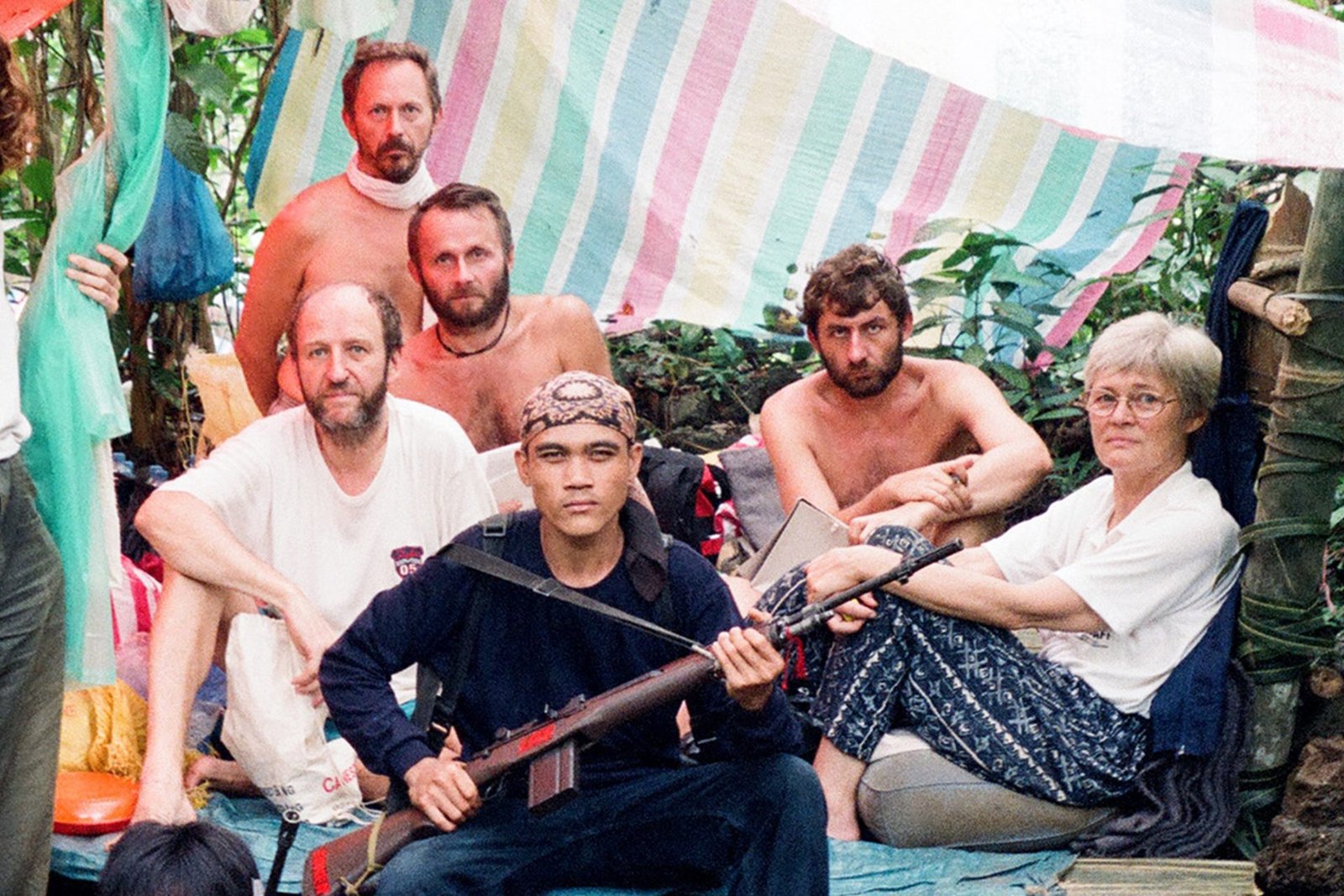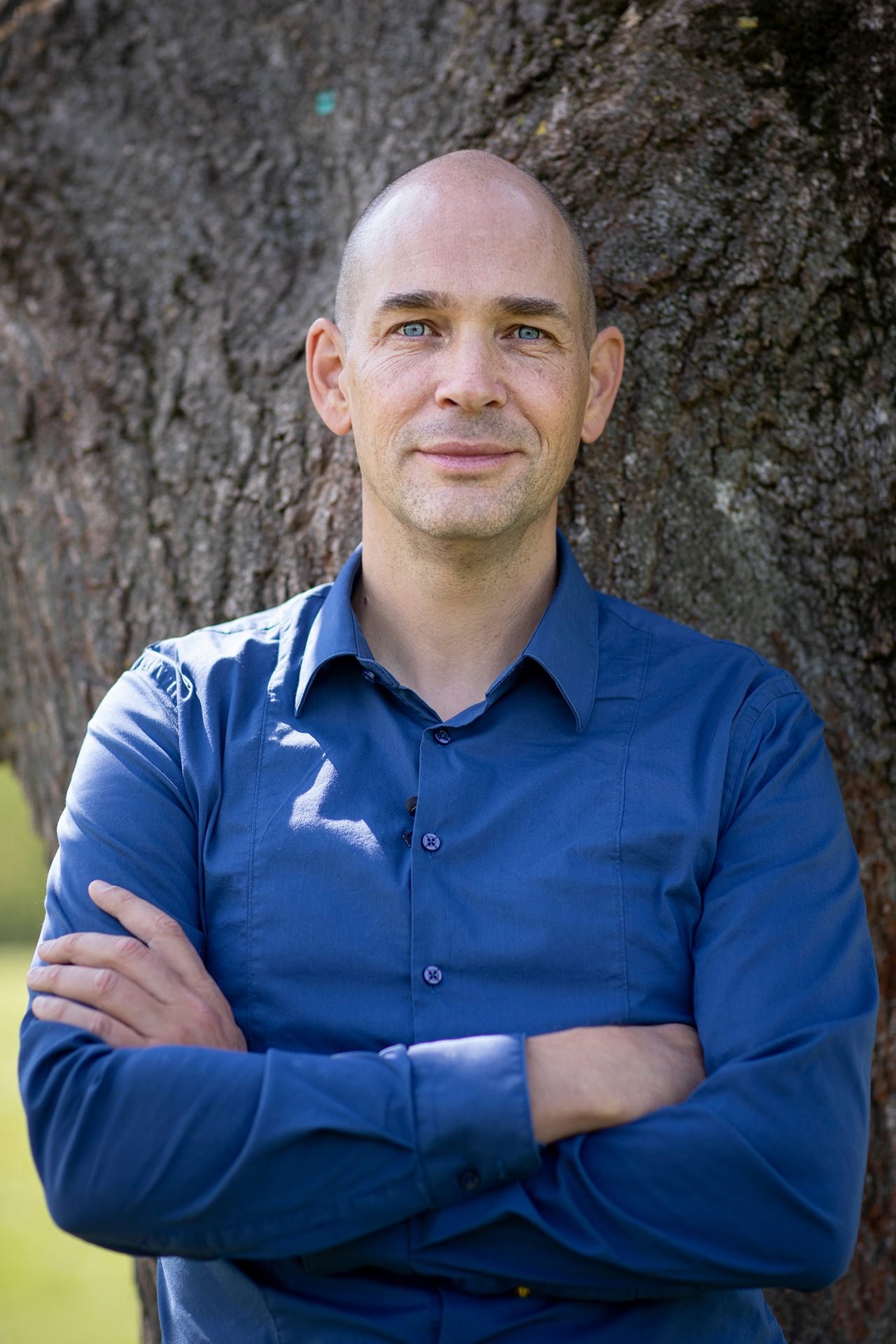The Wallert kidnapping case
Marc Wallert was kidnapped in the Philippines in 2000, together with his parents Renate Wallert and Werner Wallert. The Wallert family and 18 other people were attacked by the Abu Sayyaf terrorist group during a diving vacation on the Malaysian island of Sipadan and abducted to the Philippine island of Jolo. In Germany, millions of people followed the „kidnapping of the Wallert family“ in the media. The focus was particularly on Renate Wallert's state of health. In his SPIEGEL bestseller „Strength Through Crises“ Marc Wallert describes how he and the other hostages managed to survive the kidnapping in the Philippine jungle. His „jungle strategies“ largely correspond to the protective factors for resilience that are now scientifically well documented. These include acceptance, optimism, self-efficacy and other strategies to strengthen inner resilience called Resilience.
Today, Marc Wallert does not consider himself a „kidnap victim“, but describes himself as a „kidnap survivor“. This is because he survived his abduction well and learned a lot from his time as a hostage. He transfers his insights from the jungle Author and Speaker into the world of his readership and lecture guests.
In addition to his book, this article provides fascinating background information on Marc Wallert's abduction and his life after being held hostage.
The kidnapping of the Wallert family - abducted to the Philippines
On Easter Sunday 2000, around 8 p.m. local time on April 23, a kidnapping story began on the other side of the world which, according to German media experts, is unparalleled. An Islamist terrorist group kidnapped 21 people from the Malaysian diving island of Sipadan off the east coast of Borneo to the Philippine island of Jolo. The hostages were snatched from a vacation paradise and taken to a jungle hell.
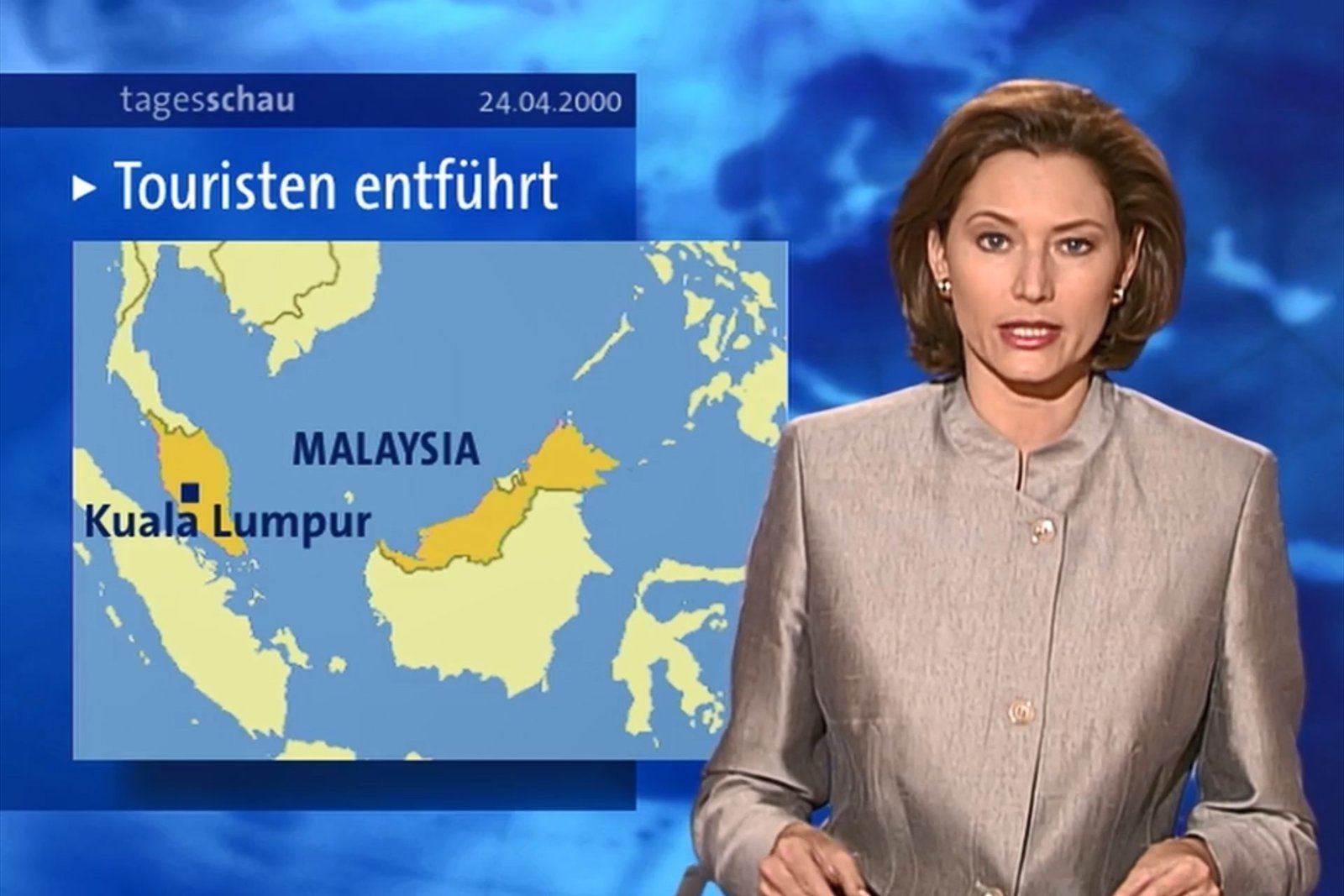
Ten of the hostages were diving vacationers, some of whom had only arrived on the island on the day of the kidnapping. The others were employees of the diving resort and staff of the turtle station next door. One of the hostages was 26-year-old Marc Wallert. As he worked as a management consultant at PricewaterhouseCoopers (PwC) in Luxembourg, he had not seen his parents Renate Wallert and Werner Wallert, who live in Göttingen, for some time. This led to the plan of a diving vacation together. For ten days, everything was completely normal and enjoyable. They went to different dive sites around the island, enjoyed the many turtles and huge schools of barracuda. And in the evenings we relaxed on the sun deck, enjoyed the sunset with a drink and then the breathtaking tropical starry sky. This was also the case on Easter Sunday.
Suddenly, the vacationers„ lives changed dramatically within seconds. 18 heavily armed terrorists attacked the diving resort and forced the victims into two boats, narrow “longboats" about ten meters long with an outboard motor, as used by fishermen in the region. An American couple who were on a night dive and another couple who steadfastly refused to get into the boats escaped from the kidnappers.
The kidnapping begins
Both boats were hopelessly overcrowded with 21 hostages, 18 kidnappers and a large number of diesel canisters. Marc and Renate Wallert were together on one longboat, Werner Wallert on a second. The boats were deep in the water, just ten centimetres short of the edge of the side. If the sea hadn't been completely smooth that night, the boats would never have reached their destination.
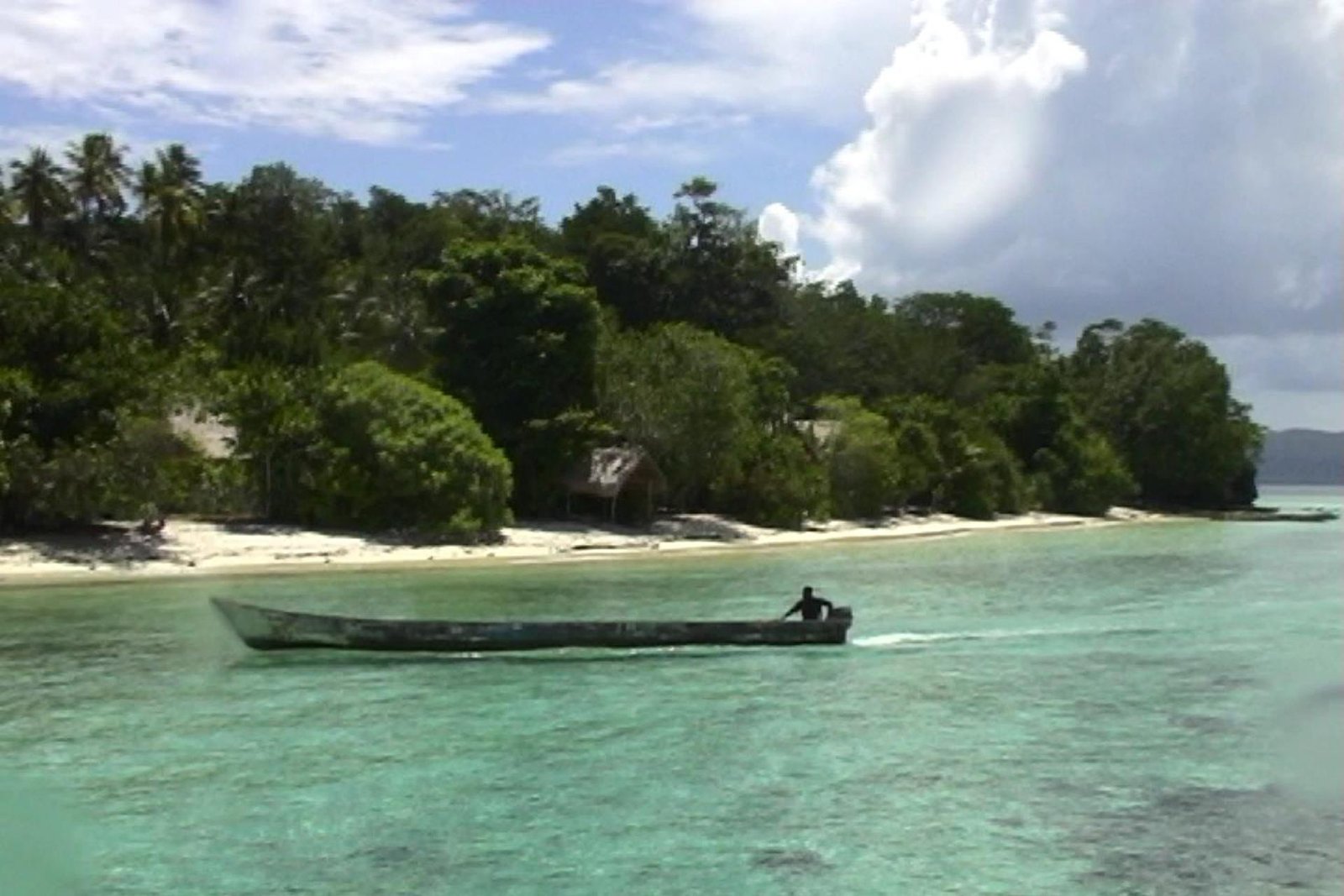
The hostages crouched on the boats, crammed tightly together, dumb with horror. The kidnappers were clearly nervous at first. They were afraid of being discovered by patrol boats from the Malaysian or Philippine navy. The journey from Sipadan in Malaysia to the Philippine island of Jolo took 20 long hours. There was hardly any food or water on board. When daylight came, the tropical sun burned mercilessly from the sky. In the maze of small islands, the hijackers finally lost their bearings and had to ask fishermen to help them find their way to the island of Jolo, which is part of the Sulu archipelago in the south of the Philippines.
The kidnappers had set off on their commando operation from here days earlier. They belonged to the Muslim terrorist group Abu Sayyaf or Abu Sajaf, which was already feared for its terrorist attacks and kidnappings. They kidnapped wealthy Filipino locals to finance themselves and carried out attacks on Christian churches and schools. However, they had never left the territory of the Philippines for a terrorist attack. As a result, there was no travel warning for the Malaysian diving island of Sipadan.
The kidnappers of the Abu Sayyaf (Abu Sajaf)
The reasons for the recurring conflict between the Catholic-dominated central government in Manila and the Muslims in the south of the country - and ultimately for this kidnapping - go back a long way in the country's history. Islam arrived in the region with Arab traders in the 13th century. In the 16th century, Spain conquered the country. The Philippines, named after a Spanish king, became the only Catholic country in Asia - except for the south. Even during American rule from the beginning of the 20th century, the rebellious Muslims in the south were not completely subjugated. In the second half of the 20th century, a civil war raged in the Sulu archipelago for two decades. In 1996, an agreement was reached with the government in Manila that granted the Muslims autonomous status within the Philippine state. This ultimately led to the founding of the Abu Sayyaf Group, whose political goal has always been complete independence and the establishment of an Islamic state in the Sulu archipelago. They saw the autonomy agreement as a betrayal of the Muslim cause. However, the Abu Sayyaf Group is not a political group; it has developed into a radical and violent Islamist terrorist group. Their idols are the Taliban in Afghanistan and Osama Bin Laden, who was killed by the Americans.
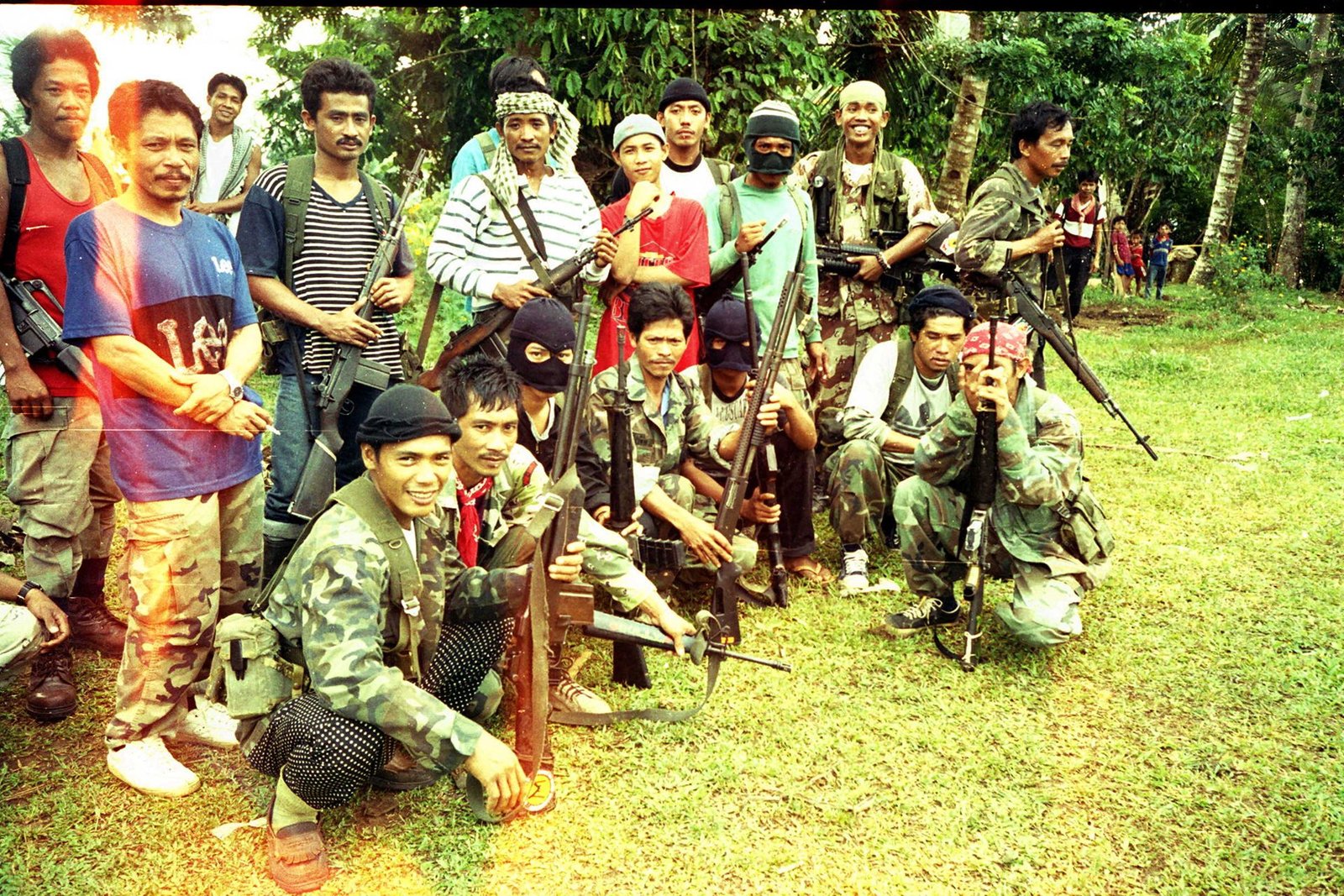
The leader of the kidnap squad was Galib Andang, known as „Commander Robot“. He questioned the hostages about their names, nationalities and occupations during the crossing to the island of Jolo. Originally, they had hoped to get hold of US citizens, as one of the aims of the kidnapping was to free one of those responsible for the 1993 World Trade Center bombing, Ramzi Ahmed Yousef, from American custody. The fact that it was four US citizens of all people who were left behind on Sipadan is not without a certain irony.
It was also Galib Andang who made it clear to the hostages that they were only „instruments“ in their fight for full independence. And from the outset, he wanted a lot of publicity for his political concerns and also for the successfully completed commando operation.
Held hostage in the Philippine jungle of Jolo
After the two boats reached the island of Jolo, the hostages were led to their first accommodation in a night march. It was a typical local farmhouse, a bamboo hut on stilts with a corrugated iron roof. The hostages ironically named the first of six camps of very different types in which they were accommodated „Crowne Plaza“. Initially, the owner's family provided the hostages with a little food, but a little later they had disappeared.
After eight days, the hostage group experienced the first attack by the Philippine army, which had surrounded the camp. On the afternoon of May 2, a prolonged battle suddenly broke out between the rebels and the army in the immediate vicinity of the shelter, which was fought with assault rifles and automatic weapons. The hostages and their captors had to flee head over heels to a small clearing a few kilometers away. There, Abu Sayyaf rebels and hostages were also shot at with artillery. Fortunately, the shelling did not cause any casualties among the hostages. The rebels were able to break through the army's siege ring with their hostages and reach the second camp in a night-time march through difficult terrain.
In the second quarter, called „Open Air Camp“, the hostages had to build their own bivouac-like sleeping quarters from bamboo poles, banana leaves and a plastic tarpaulin to protect them from the rain. A Filipino TV crew came here and photographed the entire group of hostages. The uncommented footage was published on YouTube by the Associated Press news agency in 2015. The group only stayed in these quarters for five days, as they were also tracked down by the army and involved in exchanges of fire. This was documented by a television crew. The images of the terrified hostages with the gunfire as „background music“ went around the world.
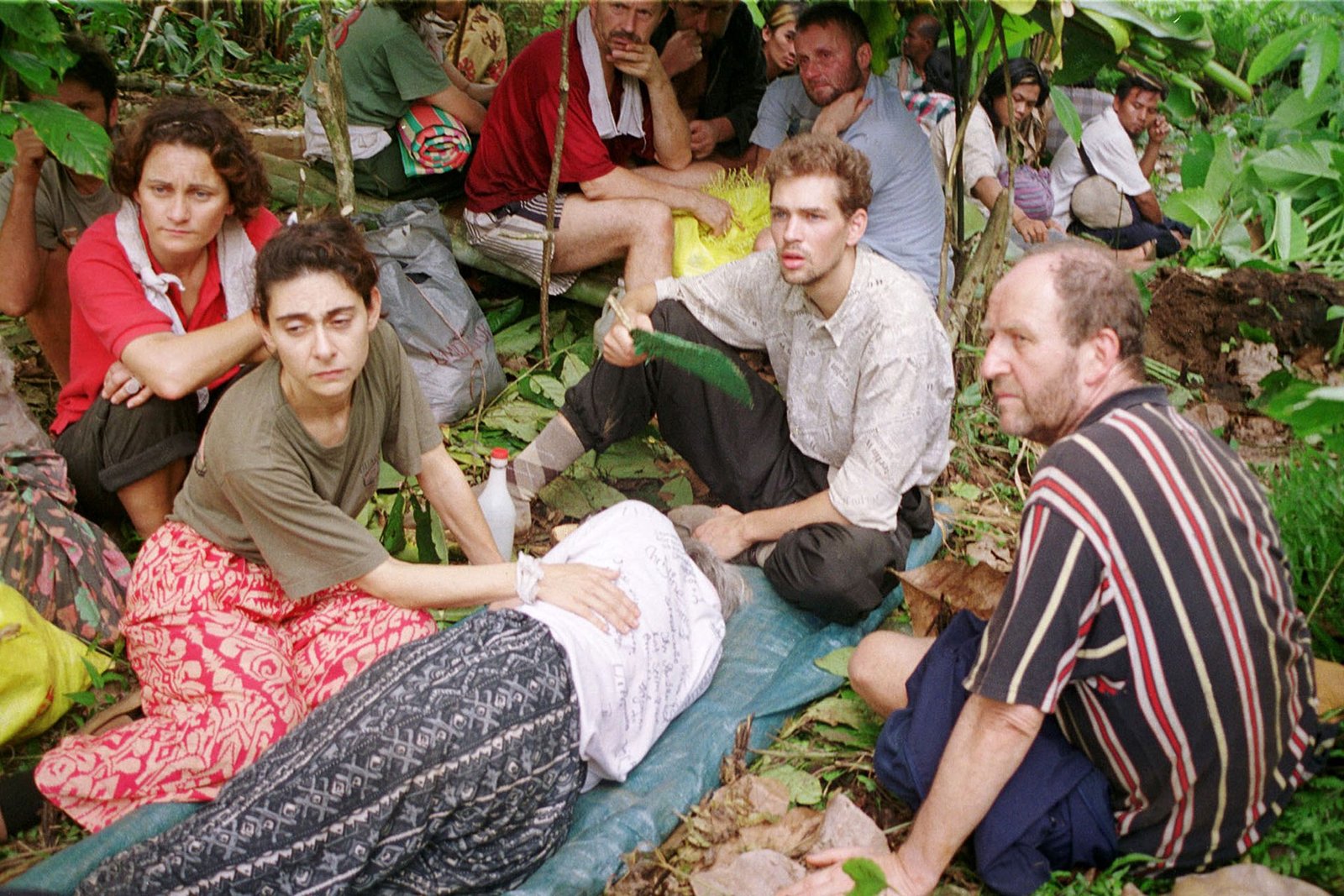
As a result, the kidnappers fled with their hostages in a one-day 30 km forced march up a mountain. This march, mostly in pitch darkness, pushed even the younger members of the hostage group to their limits. The „Mountain View Chalet“ accommodation consisted of a small abandoned bamboo hut. Due to the altitude, the water supply was a huge problem. Only contaminated water dripped from a crack in the rock.
The tough everyday life during the kidnapping
After eight days, the obvious supply problems led to another transfer to a lower-lying quarter: „Sea View Lodge“. Here the hostages lived with a farming family and occupied their living and sleeping quarters. For some of the hostages, sleeping on a kind of thin mattress was an unaccustomed luxury.
After ten days, we moved on to the „Two Rivers Camp“. As the name suggests, at least the water supply and personal hygiene were no longer a primary problem here. The accommodation for the Western hostages consisted of two open bamboo platforms with plastic tarpaulins as roofs. Many international press representatives came here. The hostage-takers therefore feared that this location would soon be spied on. After two weeks, they therefore moved their western hostages to separate quarters, the „Mid Jungle Camp“. They remained there until their release, which for Marc Wallert was around three months.
The living conditions in the six camps were extremely primitive. Some of the hostages simply slept on the floor. The plastic tarpaulins over the bamboo platforms did not really keep out the tropical rain showers. Only the farmhouses with their corrugated iron roofs offered effective protection from the wet. Of course, there were no sanitary facilities or even electricity anywhere. The hostages lived hidden in the middle of nowhere.
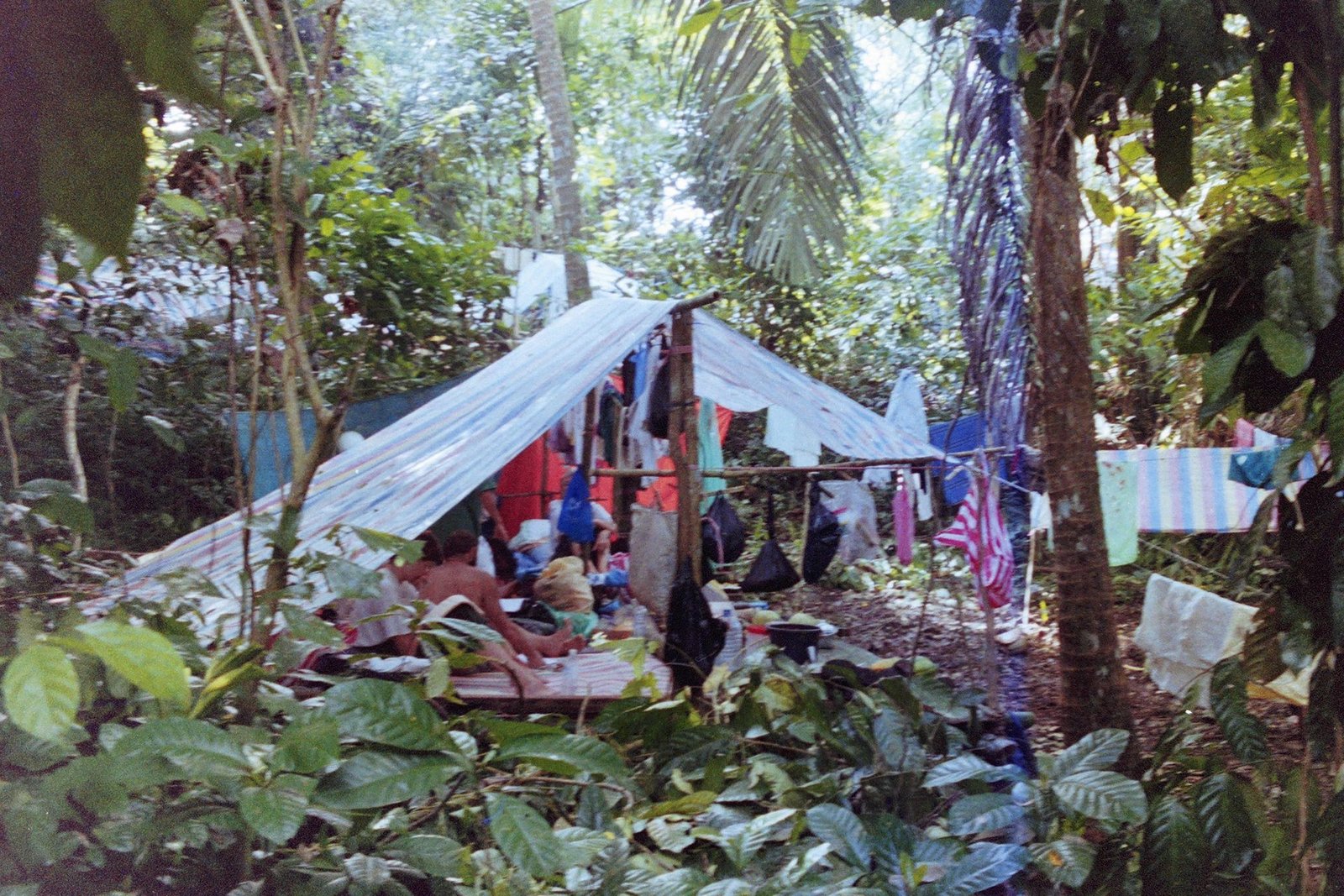
Access to water was crucial for rudimentary hygiene, drinking and cooking. In the first few weeks, food consisted almost exclusively of rice, which could only be cooked with water and a little soy sauce. The situation improved more and more thanks to deliveries via the local governor. The German embassy used these contacts to provide the hostage group in the last two quarters with combat rations from the German army. In addition to a main course, they also contained hard cookies and portioned canned food for the other meals. In the last few months, the supply was also improved by the errands of a woman who had permission from the rebels to do so. She also brought fresh food and canned food to the last two camps, which she bought at local markets. The hostages paid for this with cash that they had received hidden from their home countries or through their embassies, or which they were given by journalists who came to the camp.
The role of the media in the Wallert kidnapping case
The media played an important role in this hostage drama. They turned this kidnapping case into the unparalleled media event that dominated the headlines worldwide for a time. Achieving this was the declared aim of the rebel commanders, above all Commander Robot. They wanted to give their Abu Sayyaf group greater political significance, they wanted to be represented in the „Organization of Islamic Conference (today: Cooperation)“ (OIC). This organization of over 50 predominantly Muslim countries and organizations wants to represent the interests of Muslims worldwide. Therefore, on the 6th day of the kidnapping, a young woman with a small video camera was smuggled into the first hostage's quarters, whose shaky images were distributed globally by the news agencies. After that, professional media representatives came in large numbers to four of the six hostage camps. There were TV crews from the Philippines, Malaysia, France, Finland and Germany. There were also writers, photographers and radio reporters from various countries. In May alone, there were 16 TV teams.
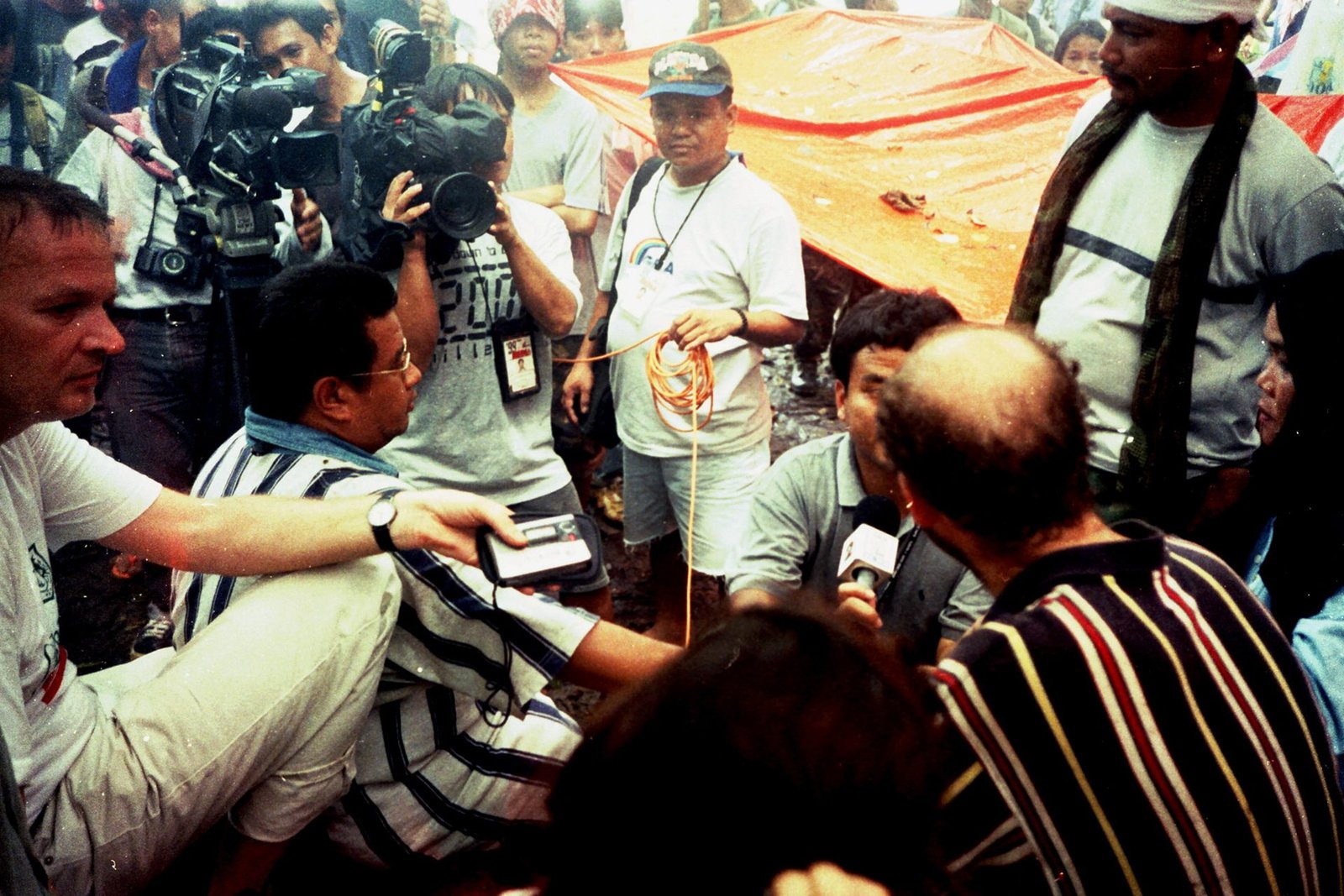
The intensive media contacts had very different effects, both positive and negative. The Abu Sayyaf Group had, as intended, dramatically increased its profile. And they benefited from the surge of journalists in the hostage camps. They demanded and received 400 dollars per team - for escorts, as they put it. In one case, when a large group of German media representatives refused to pay, they were arrested and only released after paying 25,000 dollars.
One effect at home was that the many images in the news broadcasts led viewers to perceive this real hostage-taking as a reality show - only with the added thrill that it was reality after all - albeit a distant one. The TV veteran Ulrich Wickert was quoted as saying that he had never experienced anything like it in his long career as a journalist (Brigitte L. Nacos: Mass-Mediated Terrorism, Rowman&Littfield Publishers 2002, p. 78).
In the Philippine jungle, the journalists were welcome compatriots who gave the hostages money and were able to report on the status of the negotiations and the reactions back home. Many appeals were made to their cameras. Most of them were for a peaceful negotiated solution, not surprisingly after the experience of military conflicts. The hostages had the feeling that they could do something to improve their situation themselves (see resilience strategy self-efficacy). These were rare moments, because otherwise the feeling of complete powerlessness prevailed. The hostages tended to see themselves as the subject of complex negotiations whose dynamics and background they did not understand.
Reporting on the kidnapping on site was a challenge
On the other hand, the mass influx of TV crews with their cameras was also a burden for the hostages. They called it the „zoo effect“. The journalists came, took their pictures and disappeared. The hostages stayed. The pictures and interviews were a coveted commodity on the international news market. The journalists were accused of unintentionally favoring the cause of the kidnappers, who were able to present their intentions and views in front of the cameras. And the growing publicity drove up the price of the prisoners' release. Some journalists seemed to have a stomach ache. They pointed out to the hostages that their work was preventing the hostages from being forgotten in the remote tropical jungle.
In reality, it was embassies, diplomats, crisis teams and state authorities who were working in the background to solve the case. They disliked the publicity surrounding this kidnapping case. They preferred to work in secrecy, under the conditions of a news blackout. In this case, however, they had to watch the interviews and reports by journalists in their „situation rooms“ in order to gain new insights.
The Western governments relied entirely on the state structures of the Philippines to achieve a peaceful solution to the kidnapping case. They also built up a great deal of diplomatic pressure, which met with little understanding in Manila. Here, they would have liked to make short work of the Islamist hostage-takers. Victims among the hostages would have been accepted as collateral damage, as happened in other extortion cases.
In this case, however, a special representative of the president had to engage in lengthy negotiations with a criminal rebel leader to get his political aims out of the way and haggle over the price for the release of the hostages. The peaceful end to the hostage-taking in Sipadan was ultimately achieved thanks to the financial commitment of the Libyan government at the time. A high-ranking representative of the Kohl administration was able to convince head of state Gaddafi that Libya could dramatically improve its international reputation by releasing the hostages. According to media reports, 25 million dollars were paid. In addition, the former Libyan ambassador in Manila, who knew some of the players on the rebel side from the past, was very personally involved.
Marc Wallert's jungle strategies: protective factors for resilience
Während seiner Geiselhaft im philippinischen Dschungel nutze Marc Wallert intuitiv mentale Techniken, die heute als Schutzfaktoren der Resilienz bekannt sind. Mit ihnen lässt sich die innere Widerstandskraft stärken. Dank dieser Überlebensstrategien überstand Marc Wallert seine Zeit als Geisel im Dschungel unbeschadet. Daher nennt er sie heute „Dschungelstrategien“. Seine wichtigsten Schutzfaktoren der Resilienz waren Akzeptanz, Optimismus, Realismus, Selbstwirksamkeit und soziale Unterstützung. Aber auch körperloche und mentale Fitness sowie (Galgen-)Humor spielten immer wieder eine wichtige Rolle. Daher teilt er sie heute in seinen Voträgen, damit sie auch andere Menschen im Alltag stärken.
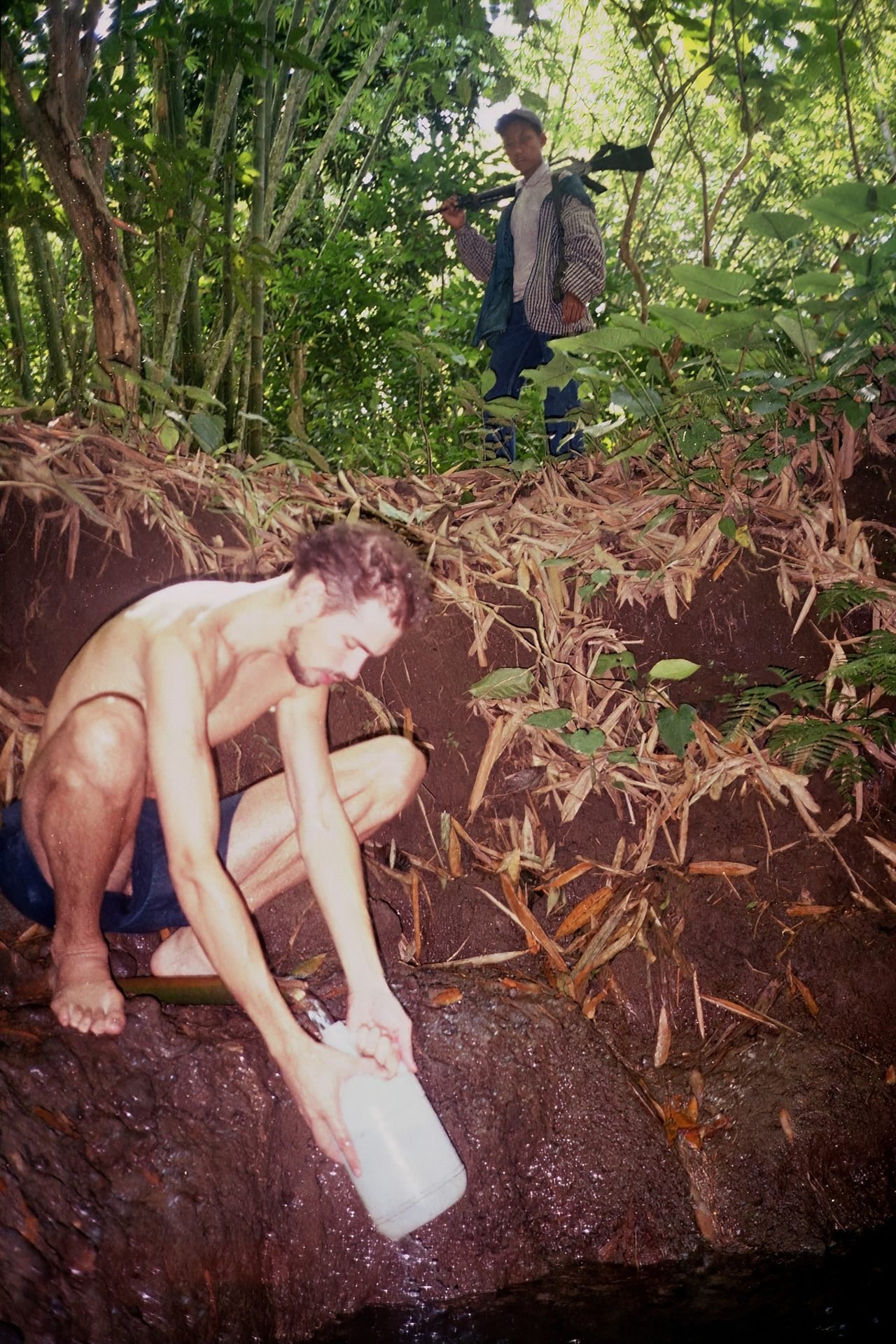
Example of a resilience technique: optimism can be strengthened, for example, with the help of positive images of the future. What helps today in everyday life also helped him back then in captivity: in the jungle, Marc Wallert repeatedly imagined what his life would be like as a free man, how he would return to Germany after his release, see his brother Dirk again and toast his freedom with him - with a cold beer! As a hostage, Marc Wallert was always encouraged by this image. And it would eventually become reality, albeit in a slightly different way than originally dreamed ...
Marc Wallert's release from hostage-taking

Marc Wallert spent four and a half months as a hostage in the Philippine jungle. On April 23, 2000, he was kidnapped in Malaysia, on July 8 he „celebrated“ his 27th birthday on the rebel island of Jolo, and on September 9 he was released under dramatic circumstances. Marc Wallert was the last Western hostage to be released, along with two Finns and a Frenchman. According to media reports, the 21 hostages were released mainly due to ransom payments - one after the other. Renate Wallert was the second hostage to be released on July 17, 2000, followed by Werner Wallert on August 27.
Hier der Auszug des Kapitels „Ende mit Schrecken“ aus Marc Wallerts Bestseller „Stark durch Krisen“:
Book excerpt: „An end with horror“
„On the morning of September 9, 2000, I had no idea that my release was imminent. We suddenly heard heavy gunfire in the jungle. Again we had to flee, without knowing where to and from what. By now we were only four western hostages: Seppo, Risto, Stéphane and me. The others had already been released, with the exception of our Filipino companion Abi, who was being held elsewhere.
After several kilometers of walking, Commander Robot ordered us to climb into a small bamboo house on stilts in the middle of an open field. There we crouched and waited - tensed to the utmost as the gunfire came closer and closer. Finally, several military jeeps and transporters drove up. Two emissaries of the Filipino negotiators got out and began to argue excitedly with Commander Robot. They obviously had the ransom for us with them. Their convoy had been ambushed by a rival Abu Sayyaf faction on the way there. They feared for their share of the ransom and therefore tried to torpedo our release. The attack had resulted in deaths and injuries among the bodyguards of the envoys. A nerve-wracking haggling over us hostages took place before our eyes - with unmistakable gestures. The emissaries pointed at us and made a four-fingered hand signal. Commander Robot raised three fingers and pointed to Seppo, Risto and Stéphane. He only wanted to release three hostages. I, of all people, was to be left behind as a bargaining chip to protect them from the Philippine military. Perhaps also to extort further ransom money.
It was cruel to see how my release became the most important negotiating point in the chaos. My greatest fear was to be left alone in the end. To have no one left to share my fate, to talk to, to take care of.
The combat fire seemed to be getting closer. Time was pressing. Suddenly, the emissaries, sweating with excitement, reached out their hands to Commander Robot. He took it. My heart almost stopped. Then came the liberating news: all four hostages would be released.
We were asked to quickly climb onto the back of a van. We sat tightly packed between heavily armed rebels and the emissaries' bodyguards. The convoy that had been shot at on the way there had become a transport for the dead and wounded. The transporter was open at the sides and offered no protection whatsoever. Through the open back, I could see other transports, densely loaded with rebels holding their weapons at the ready. Together with the rebels, we bumped along jungle tracks for what felt like an eternity until we stopped on a paved road. The rebels jumped off our vehicle and soldiers from the Philippine army got in. That was a good sign. Nevertheless, I tried to curb my euphoria. Just don't lose your head.
We rolled along the road for a few kilometers and stopped at a field. Military helicopters were already waiting for us there. We took off with them in the direction of freedom. The doors of the combat helicopters were unhinged and manned by soldiers with machine guns.
Overwhelmed by an indescribable mixture of emotions, I looked into the eyes of my three companions. They were also wavering between crying and laughing. One last doubt flashed through my mind: what if a ground-to-air missile hit us from the sky? But after what felt like the longest flight of my life, we finally touched down in a safe place. I saw the first fortified houses in a long time and a crowd of people waiting for us. I could hardly believe my luck. After months of trembling, it was finally true: I was a free man again.“
[Ausschnitt aus Marc Wallerts Spiegel-Bestseller „Stark durch Krisen“ (Econ, 2019)]
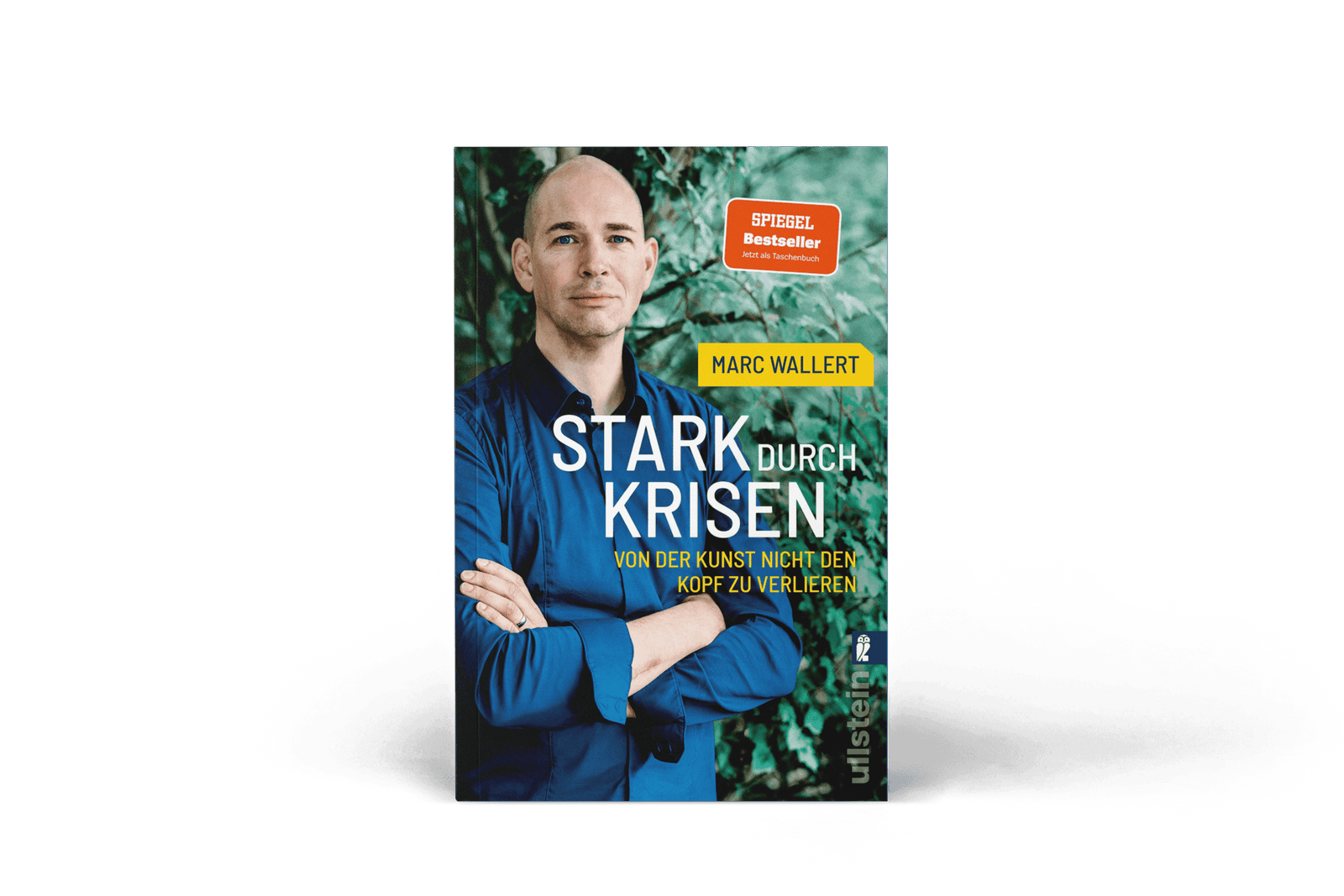
Marc Wallert's life after the kidnapping
After his release, Marc Wallert first flew to Libya to thank Gaddafi for his commitment to a peaceful release. To his great surprise and delight, his brother Dirk Wallert came to Tripoli to meet him. It was here that Marc Wallert's vision became reality: Dirk and Marc Wallert toasted freedom with a beer! They were finally reunited with their parents Werner and Renate Wallert at Hanover Airport.
After their release, the Wallert family faced up to the media interest and gave numerous interviews and press conferences. Not least as a sign of appreciation to the many people who had been following them on screen. It was almost impossible to escape the media coverage of the „abduction of the Wallert family“ in 2000, even if you wanted to. The Tagesschau at 8 p.m. alone reported on the Wallert abduction case for around two hours. The Wallert family's desire for privacy grew all the more.
After a few weeks in his home town of Göttingen, Marc Wallert returned to Luxembourg, where he worked as a management consultant. He quickly resumed his old career and worked as a consultant and manager in international companies for over 15 years. He was always successful, but mostly stressed. Ultimately, it was „deadlines“, which were not really fatal, that drove Marc Wallert into a burnout. His burnout and private relationship crises later taught him a lot about crises. Namely, how to not only be strong through crises comes, but also strongly influenced by crises becomes. Inspired by these experiences, Marc Wallert decided to write a book. Not a kidnapping story, but an inspirational guide for people who are looking for inspiration on how to deal with crises and want to develop mental strength. It's about dealing with crises in a good (and humorous) way. Yes, Marc Wallert has developed a soft spot for crises, or at least for the opportunities that lie dormant in them. „Resilience“ is the name of the topic close to his heart, which he now Vorträgen als Keynote Speaker teilt.
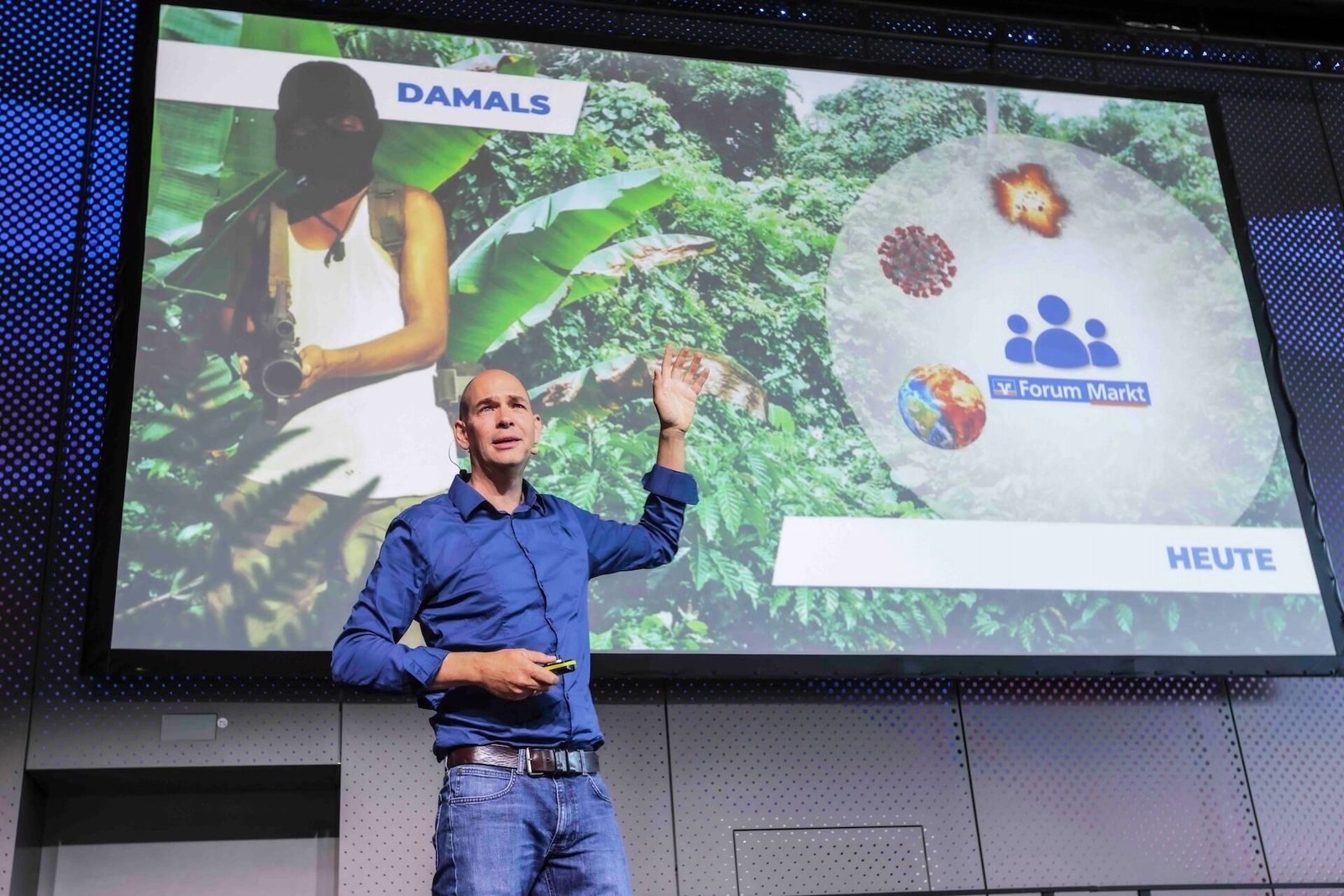
What does the Wallert family do today?
The Wallert family became known to many people in 2000 due to the intensive media coverage of the kidnapping. In particular, the question „How is Renate Wallert?“ moved many people after the pictures from 2000.
Renate Wallert has largely recovered mentally and physically since her release and is now in good health for her age, as is her husband Werner Wallert. Both are enjoying their retirement. They are now the proud grandparents of five grandchildren of their two sons Dirk and Marc Wallert.
Marc is now a happily married family man with three children. He loves traveling the world with his family. When time allows, he makes music and scuba dives.
As Keynote Speaker for resilience trägt er seine stärkende Botschaft in die Welt. Wie schon früher als Musiker, liebt er die große Bühne genauso wie das professionelle Studio. Ob live vor Ort oder virtuell – es knistert zwischen Marc und den Menschen. Es sind diese Gänsehaut-Momente, die Marc antreiben, da sie Menschen öffnen für Veränderungen in sich und in der Welt.
